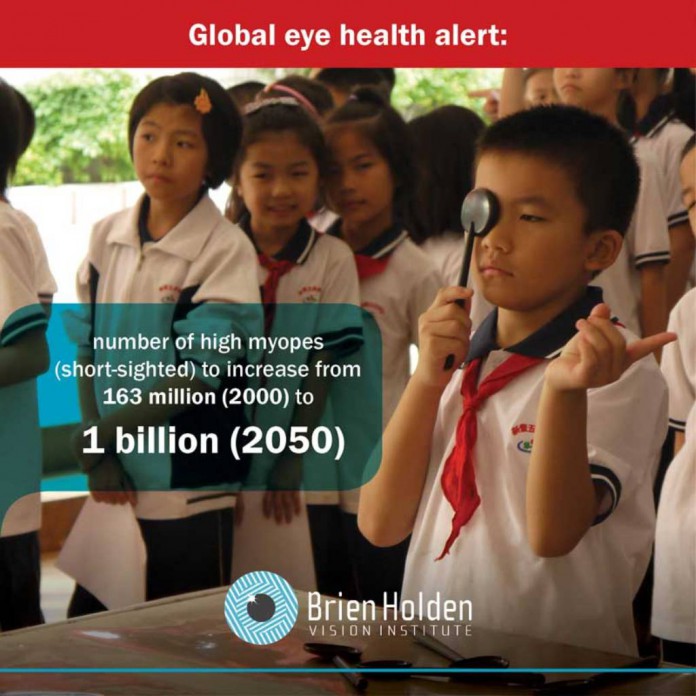5 billion to be short-sighted (myopic) by the year 2050 and one in ten at risk of blindness
Half the world’s population (nearly 5 billion) will be short-sighted (myopic) by 2050, with up to one-fifth of them (1 billion) at a significantly increased risk of blindness if current trends continue, says a study published in the journal Ophthalmology.
It’s estimated that there are currently 2 billion myopic people in the world. The number with vision loss from high myopia is expected to increase seven-fold from 2000 to 2050, with myopia to become a leading cause of permanent blindness worldwide. The rapid increase in the prevalence of myopia globally is attributed to environmental factors (nurture), principally lifestyle changes resulting from a combination of decreased time outdoors and increased near work activities, among other factors.
Parents are advised to have children’s eyes checked regularly, preferably each year, so that preventative strategies can be employed if they are at risk. The preventative strategies may include increased time outdoors and reduced time spent on near based activities including electronic devices that require constant focusing up close.
What is myopia?
Myopia, also known as ‘short-sightedness’ or ‘near-sightedness’, causes people to have difficulty seeing distant objects clearly. The myopic eye is stronger than the non-myopic eye (often because the eye is longer). This means that instead of focusing on the back of the eye (the retina), light focuses in front of it, causing blurred vision.
What causes myopia?
The causes of myopia are both genetic and environmental. It is suggested that increased urbanisation and close-range activities e.g. reading and computer work, are increasing the incidence of myopia.
How myopia can be corrected?
Myopia can be corrected by spectacles, contact lenses and refractive surgery.
Source: PR Newswire / brienholdenvision.org









